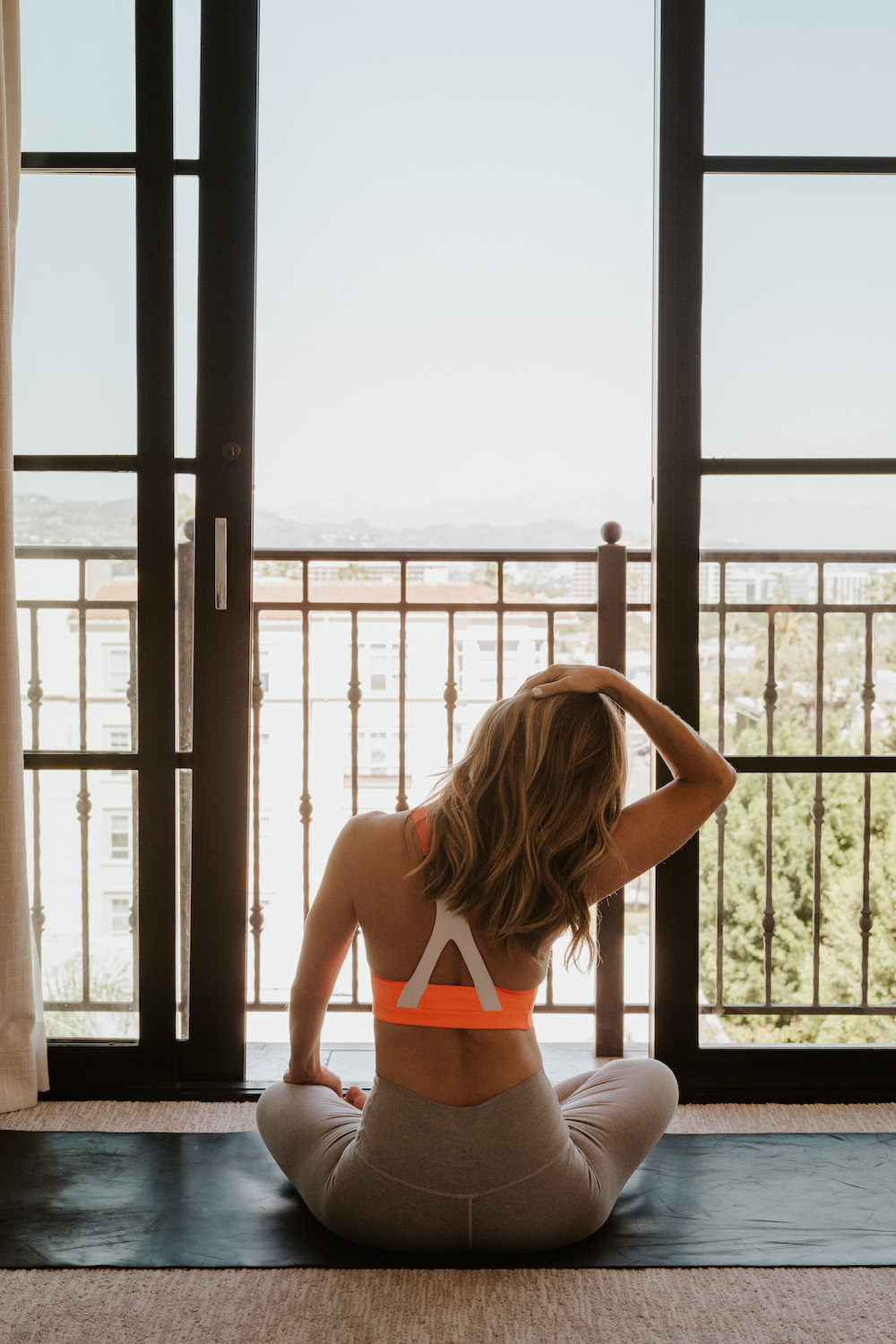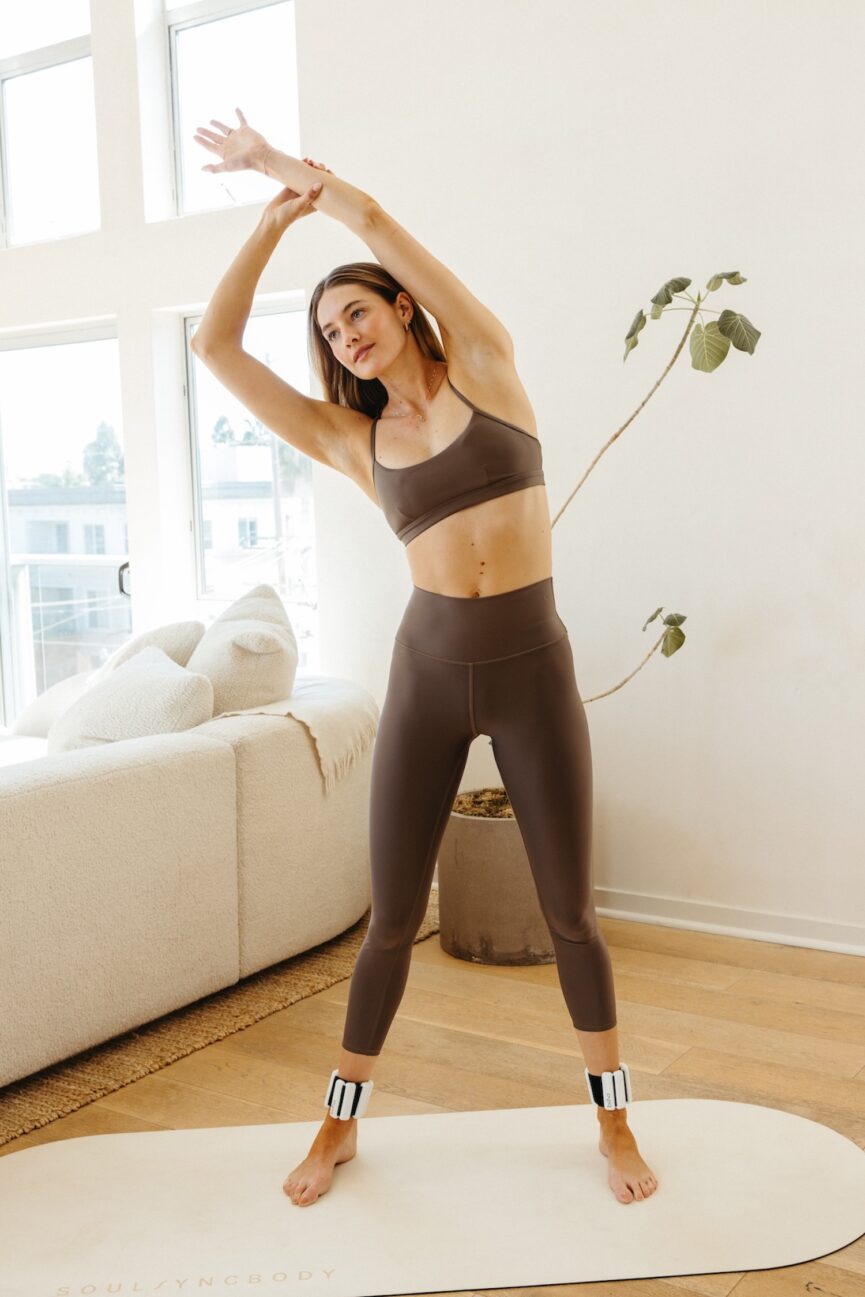The Wellness Lies I Believed in My 20s—and the Truths I Live by Now
“The most nourishing path is often the least performative one.” The post The Wellness Lies I Believed in My 20s—and the Truths I Live by Now appeared first on Camille Styles.

In my 20s, “wellness” became a blueprint for how to live—structured, prescriptive, and endlessly optimized. I approached it the way many women do: with curiosity sparked by Instagram and a perfectionism shaped by years of internalized shoulds. Every smoothie ingredient had a function. Every morning routine needed to be maximized. Rest was earned. Pleasure was suspicious. I mistook control for care. And like so many of us trying to do it “right,” I rarely paused to ask if any of it actually made me feel good.
Looking back, it was all part of a larger system of wellness propaganda I’m not falling for anymore—the kind that preys on our desire to be better while keeping us locked in a cycle of never enough.
Feature image from our interview with Inge Theron

Wellness Propaganda I’m Not Falling for in My 30s
Now, in my early 30s, I have the opportunity to unlearn the idea that wellness is one-size-fits-all. Letting go of the rules has been disorienting at times—especially when we’re constantly sold the next routine, ritual, or reset. But I’ve come to understand that the wellness habits worth keeping are the ones that meet me where I am, not where I think I should be. This is the work: turning inward, tuning out the noise, and making peace with the fact that the most nourishing path is often the least performative one.
Wellness doesn’t mean always feeling good. It means giving yourself the freedom to feel everything.
From Clean Eating to Joyful Nourishment
Clean eating was once my entire personality. I believed that the more foods I could cut out, the healthier I would be. Beneath the surface, though, that rigidity masked something more painful—my eating disorder, which shaped not just how I ate, but how I viewed myself. Like so many women, I confused discipline with health, mistaking restriction for control. “Clean” became a moral category, and I lived in fear of anything processed, indulgent, or pleasurable. The wellness world applauded it. And I did, too—until the mental and emotional weight became too heavy to carry.
What saved me wasn’t a new food philosophy but the slow, often uncomfortable realization that nourishment can’t come from fear. Over time, I learned that no food is inherently bad—and that ice cream on a summer night or pizza with friends is just as valuable as a green smoothie on a Tuesday morning. Today, I eat in a way that’s varied, flexible, and in alignment with what I need and truly want. I eat for energy, yes—but also for joy, connection, and fun. There’s no longer a moral halo over my meals, which means there’s no guilt clouding them, either.
Try This Instead:
If you’re beginning to unlearn clean eating, start by noticing your inner food dialogue. Do certain meals bring shame? Do others make you feel “good” or “bad” about yourself? Instead of assigning value, practice neutrality—then curiosity. Let yourself eat the thing that once scared you. Taste it. Enjoy it. And see what happens when food is just food again.
The Toxic Side of Relentless Productivity
Who else has been hooked on the high of getting things done? I used to pack my days with back-to-back to-dos, wore my burnout like a badge of honor, and convinced myself that rest was indulgent, not essential. Wellness, for me, wasn’t about how I felt—it was about how efficiently I could function. I believed that if I just mastered the right morning routine or productivity hack, I could finally outrun the low hum of anxiety that followed me everywhere. But even on my most productive days, I rarely felt at peace. Because no matter how much I accomplished, it never seemed to be enough.
It took hitting a wall—mentally, emotionally, and physically—for me to start asking different questions. What would it look like to prioritize presence over performance? Could I let a day be meaningful even if it wasn’t productive? Slowly, I began replacing the pressure to optimize with a practice of paying attention. Now, I build my days around what matters to me—quiet mornings, nourishing conversations, focused work hours, and open space in between. I still love a checklist, but I no longer confuse busyness with worth.
Try This Instead:
If you’re caught in the loop of constant doing, try a values-based approach to time. At the start of the week, identify what’s most important to feel—not just accomplish. Maybe it’s connection, creativity, or rest. Then build your schedule around supporting that feeling. And remember: productivity is not a measure of your value. It’s just one small part of a full, meaningful life.
Releasing the Grip of Toxic Positivity
For years, I clung to the idea that if I could just stay positive, everything would be okay. I curated my mindset the way I did my Instagram feed—filtered, bright, and relentlessly upbeat. I repeated mantras like “good vibes only” and tried to reframe every hard thing as a lesson. And while there’s something to be said for optimism, I used it to bypass the emotions I didn’t want to feel. Sadness, anger, disappointment—those didn’t fit the version of wellness I was trying to maintain. I believed that if I let them in, they might take over. So I shut them out.
But here’s the truth: Emotions demand to be felt. And the more I tried to gloss over them, the more they found ways to surface—through anxiety, burnout, and disconnection. What I’ve come to understand is that real wellness makes space for the full spectrum of feeling. It’s in the quiet acceptance of a hard day. In the tears that come without needing to fix them. In the deep exhale that follows telling the truth. Now, I strive not for positivity, but for emotional honesty. I let the good days be good, and I let the hard ones exist without shame.
But here’s the truth: Emotions demand to be felt. And the more I tried to gloss over them, the more they found ways to surface—through anxiety, burnout, and disconnection.
Try This Instead:
When you’re tempted to “positive-think” your way out of discomfort, pause. Ask yourself: what am I actually feeling right now? Name it without judgment. Let yourself sit with it, journal through it, talk it out with someone you trust. There’s strength in being with your emotions—not in pretending they’re not there. Wellness doesn’t mean always feeling good. It means giving yourself the freedom to feel everything.
Wellness as Performance vs. Lived Experience
It makes sense: In our visual-first world, I believed that wellness was something I had to prove. It wasn’t just about how I cared for myself—it was about how that care looked to others. I documented everything: my matcha, my yoga mat, the books on my nightstand. I was constantly reaching for a kind of aesthetic validation, curating a version of wellness that looked calm, balanced, and aspirational. I wasn’t trying to be performative, not consciously. But in a culture where sharing is a default, I struggled to separate the rituals that grounded me from the ones I thought I should do (and show).
Eventually, I realized the truest wellness moments were the ones I wasn’t posting: The walk I took without my phone, the quiet cry I had in the shower, the warm bowl of pasta I made myself after a long day. These were the rituals that didn’t look like much, but meant everything. Today, I measure the quality of my wellness not by how it appears, but by how I feel afterward—calmer, softer, more myself. It’s not performative. It’s deeply lived.
Try This Instead:
Audit your rituals. Ask yourself: Am I doing this because it nourishes me—or because it fits a certain image? Begin introducing more moments that are just for you. Leave your phone in the other room. Don’t worry about what it looks like. Let your wellness be unpolished, quiet, even invisible. That’s where the magic lives.
The Most Beautiful Wellness Is Your Own
Wellness in my 20s was loud. It demanded attention—structured, aesthetic, often performative. But the wellness I’ve found in my 30s? It’s quiet. It doesn’t ask to be seen, and it doesn’t need to be justified. It’s a long walk when I’m anxious or calling a friend instead of pushing through. And the cold plunge? I’ve finally admitted it’s just not for me, and that’s its own kind of freedom.
This is the kind of wellness I want more of: intuitive, imperfect, and entirely my own.
If you find yourself untangling what wellness should look like from what actually feels good, know this: You’re not alone. There’s so much freedom in letting go of the rules that never really fit—and so much beauty in building something gentler in their place. Start small. Start honest. And remember that wellness isn’t something to master. It’s something to live.

 ValVades
ValVades 






























